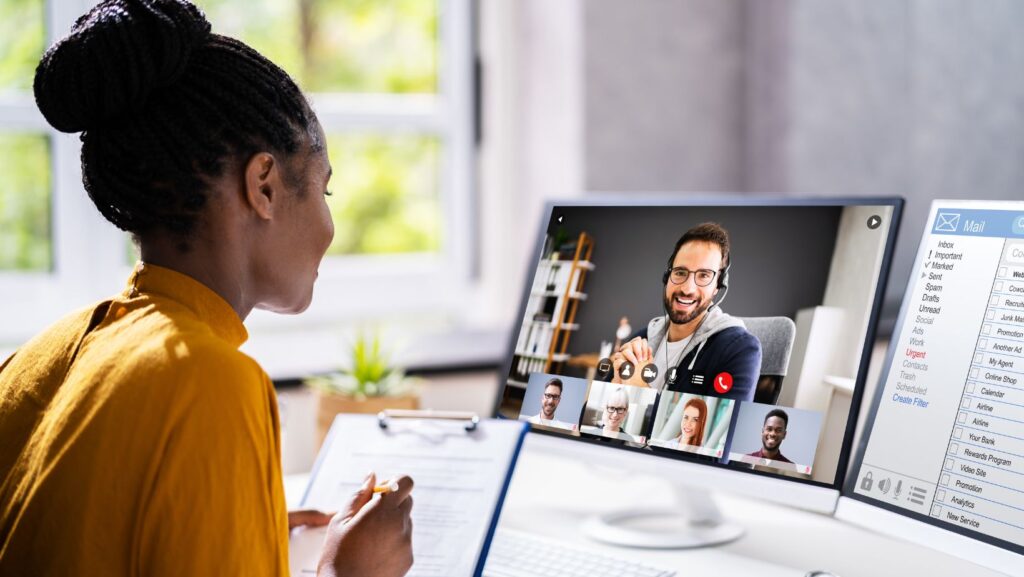Job interviews are an essential part of the hiring process, and with the rise of remote work, one-way video interviews have become increasingly popular. These interviews are an innovative way for companies to screen candidates without needing to arrange for in-person meetings. But if you’re not familiar with this format, it can feel intimidating at first. Don’t worry—this guide will break down the process and provide tips on how to succeed in a one-way video interview.
What is a One-Way Video Interview?
A one-way video interview is a pre-recorded interview format where you’re given a set of questions, and you respond by recording yourself. Unlike traditional interviews, where you speak with a recruiter or hiring manager in real-time, a one-way video interview doesn’t involve live interaction. This gives you the flexibility to answer questions at your convenience within a set time limit. However, it also means there’s no immediate feedback, and you have to rely on your preparation and presentation skills.
Why Are One-Way Interviews Popular?
Companies love one-way video interviews because they save time and resources. Interviewers can review responses at their convenience without needing to coordinate schedules. This format also gives candidates an equal playing field since everyone has the same time to respond without the pressure of a live conversation. It’s a win-win for both parties when done right.
Steps to Prepare for a One-Way Video Interview
While the idea of recording yourself might feel awkward at first, proper preparation can make a big difference. Here are some practical steps to ensure that you’re ready to tackle the interview confidently.
Understand the Format
Before you start, make sure you know what to expect. A one-way video interview usually starts with an introduction from the company, explaining the format, followed by a set of questions. You’ll have a limited time to answer each question—typically between 30 seconds to 2 minutes. In some cases, you might have the opportunity to re-record your answers, but other times you may only get one shot, so be sure to check the instructions before you begin.
Choose the Right Environment
The environment where you record your video matters. Ideally, you want to choose a quiet and well-lit space where you can avoid distractions. Natural light works best, but if that’s not available, ensure that you have adequate lighting from the front, not from behind. You don’t want to look like you’re in a shadow! Make sure the background is neat and professional, as this will contribute to the overall impression you make.
Check Your Technology
Test your technology before you start the interview. This includes checking the camera, microphone, and internet connection. If you’re using a laptop, ensure it’s fully charged or plugged in. Record a test video to check the quality of your sound and image. Also, make sure that the software or platform you’re using for the interview is working correctly so you’re not scrambling at the last minute.
Dress Professionally
Even though it’s a video interview, don’t fall into the trap of dressing casually. Wear professional attire that fits the company’s culture. If you’re not sure about the dress code, it’s better to overdress than underdress.

Keep in mind that bright colors and intricate patterns can be distracting on camera, so aim for solid colors that give a clean, polished look.
How to Succeed in a One-Way Interview
Once you’re ready, it’s time to focus on how to present yourself in the best possible light. Here are some strategies to ensure you make a strong impression:
Practice Makes Perfect
Before jumping into the actual interview, practice your answers to common interview questions. Rehearse in front of the camera to get comfortable with the format. Doing so will help you fine-tune your answers and prevent you from feeling nervous when it’s time to record the real responses. You might also consider recording yourself and watching it back to see how you come across.
Answer the Question Clearly and Concisely
When answering questions, make sure your responses are clear and to the point. One-way video interviews typically have time limits for each question, so it’s important not to ramble. Stick to the key points and highlight relevant skills or experiences that make you a great fit for the role. If the question is behavioral, use the STAR method (Situation, Task, Action, Result) to structure your response effectively.
Maintain Eye Contact with the Camera
This might seem like a small detail, but maintaining eye contact with the camera is crucial in a video interview. It helps you appear more engaged and confident. Avoid looking at yourself on the screen, as this can be distracting and make you appear disconnected. Keep your focus on the camera lens, which will simulate eye contact with the interviewer.
Be Mindful of Your Body Language
While it’s important to be articulate, your body language also plays a significant role in conveying confidence and enthusiasm. Sit up straight, smile, and use natural hand gestures if they help express your points. Avoid fidgeting or looking distracted, as this can undermine the professionalism of your response. Keep your posture relaxed but confident.
Show Your Enthusiasm
Since you won’t be interacting with a live person, it’s important to show your enthusiasm through your words and body language. Be energetic in your responses, but avoid sounding over the top. Strike the right balance between being professional and conveying your excitement about the opportunity.
Use a One-Way Interview Guide
If you’re unsure where to start or what to include in your responses, a one-way interview guide can be a helpful resource. These guides typically provide sample questions and tips for answering them, as well as reminders about the technical aspects of recording. A guide can serve as a useful checklist to make sure you’re on track and help you structure your answers effectively.
Rehearse Your Responses
To help you succeed, it’s a good idea to rehearse your responses to common interview questions. As part of your preparation, use a one-way interview guide to get an understanding of the questions you might face and how best to answer them. Practice until you feel comfortable with your responses. Remember, the goal is to appear confident and poised, and the more you practice, the easier this will become.
Stay Calm and Confident
One of the key challenges in a one-way interview is the lack of live interaction, but you can still convey confidence through your tone and body language. Take deep breaths before starting, and maintain a calm demeanor throughout the interview. By using a one-way interview guide, you can ensure you’re fully prepared and reduce any anxiety about the format.
Analyze Your Responses
After recording your answers, take the time to review them carefully. A good one-way interview guide will encourage you to reflect on your answers, ensuring they are clear and concise.

If you have the opportunity to re-record any responses, use that to your advantage and make sure everything is perfect before submitting your final video.
Common Mistakes to Avoid
To help you feel even more confident, here are some common mistakes to avoid in a one-way video interview:
Not Preparing Enough
It might be tempting to “wing it,” but not preparing adequately can hurt your chances. You should always practice your responses, check your equipment, and set up the right environment. This will give you a much higher chance of delivering a polished and professional response.
Speaking Too Quickly or Too Slowly
It’s important to strike the right pace when speaking. Talking too quickly can make you seem nervous and unclear, and speaking too slowly might make you sound disengaged. Practice speaking at a moderate pace and enunciate your words clearly.
Focusing Too Much on the Technology
While technology is important, focusing too much on it can distract you from the actual content of your answers. Once everything is set up, shift your focus entirely to answering the questions and presenting yourself as the best candidate.
Not Being Authentic
While it’s crucial to be professional, you also want to show your authentic self. Employers want to get to know you, so don’t be afraid to let your personality shine through. Try to relax and treat the interview as a conversation, even though it’s prerecorded.
Follow-Up After the Interview
Once you’ve completed your one-way video interview, don’t forget to send a thank-you email. While you won’t be able to interact live with the interviewer, sending a polite follow-up email to express your gratitude for the opportunity is a nice touch. Mention something specific from your interview to show your genuine interest in the role.
Final Thoughts
A one-way video interview might seem daunting, but with the right preparation, it can be a great way to showcase your skills and personality to potential employers. By understanding the format, practicing your answers, and ensuring your technology and environment are in top shape, you can ace your interview and stand out from the competition. Keep these tips in mind, and you’ll be well on your way to making a lasting impression.
Good luck, and remember that each interview is a learning experience that gets you one step closer to your dream job!

